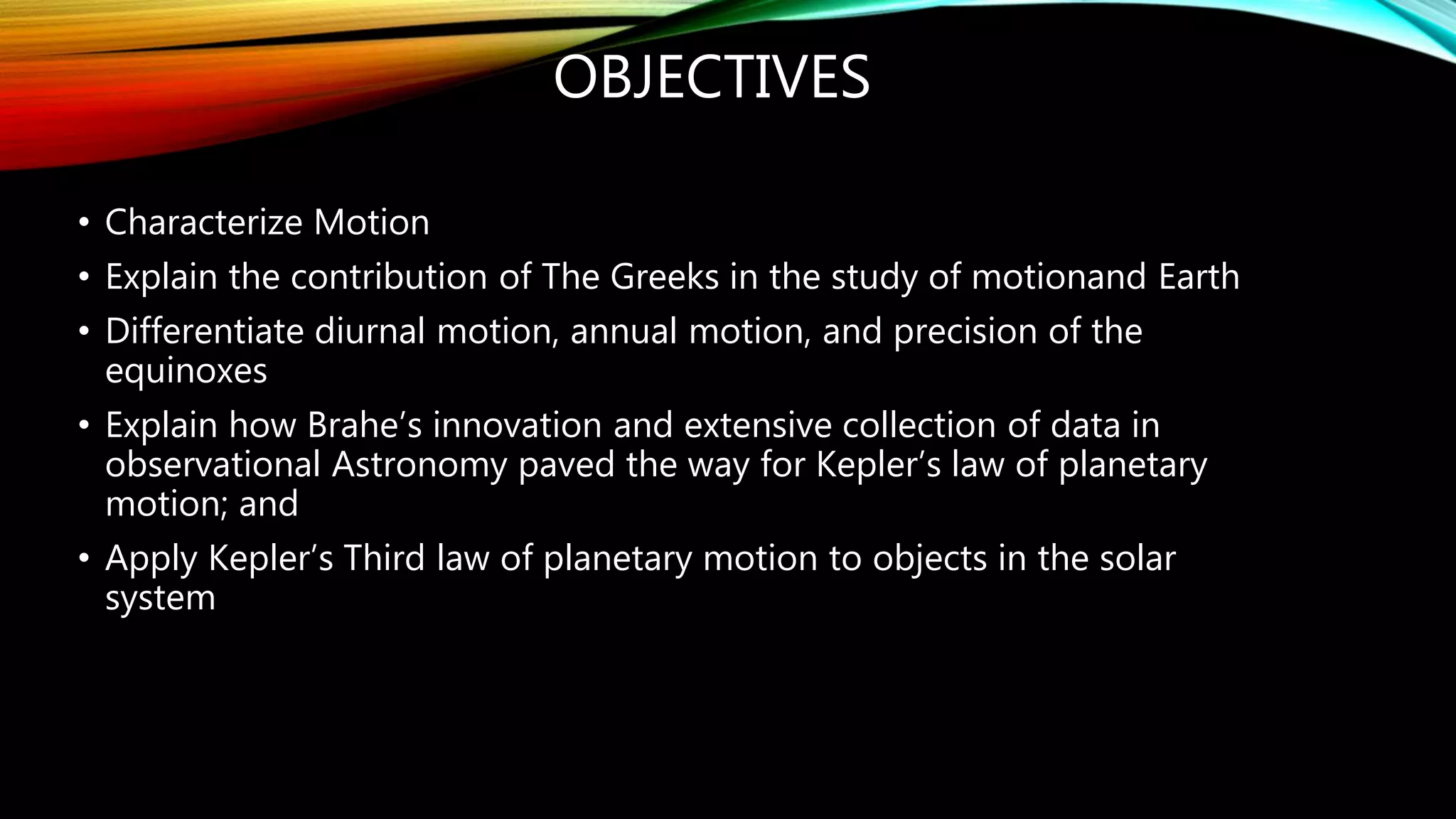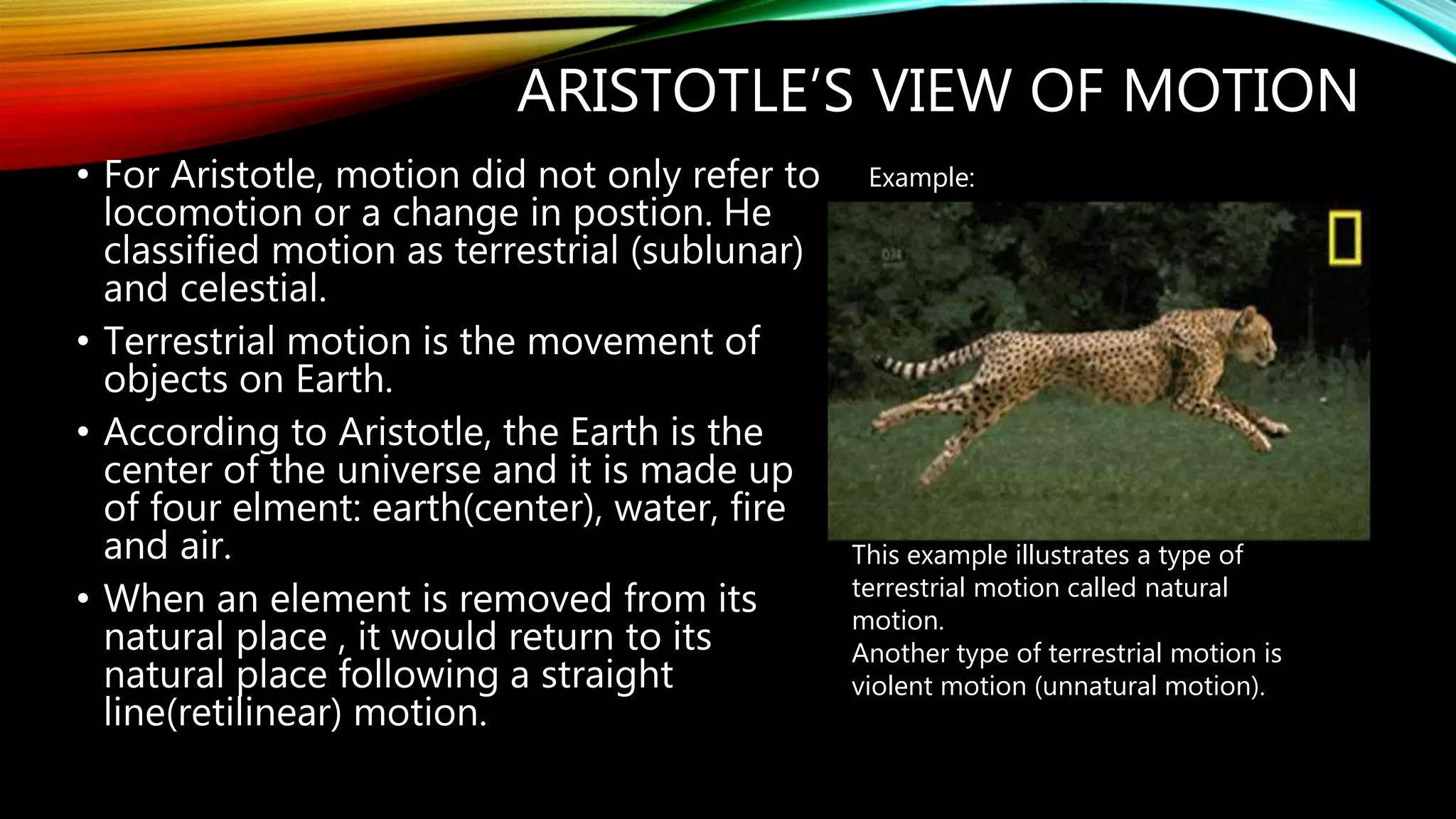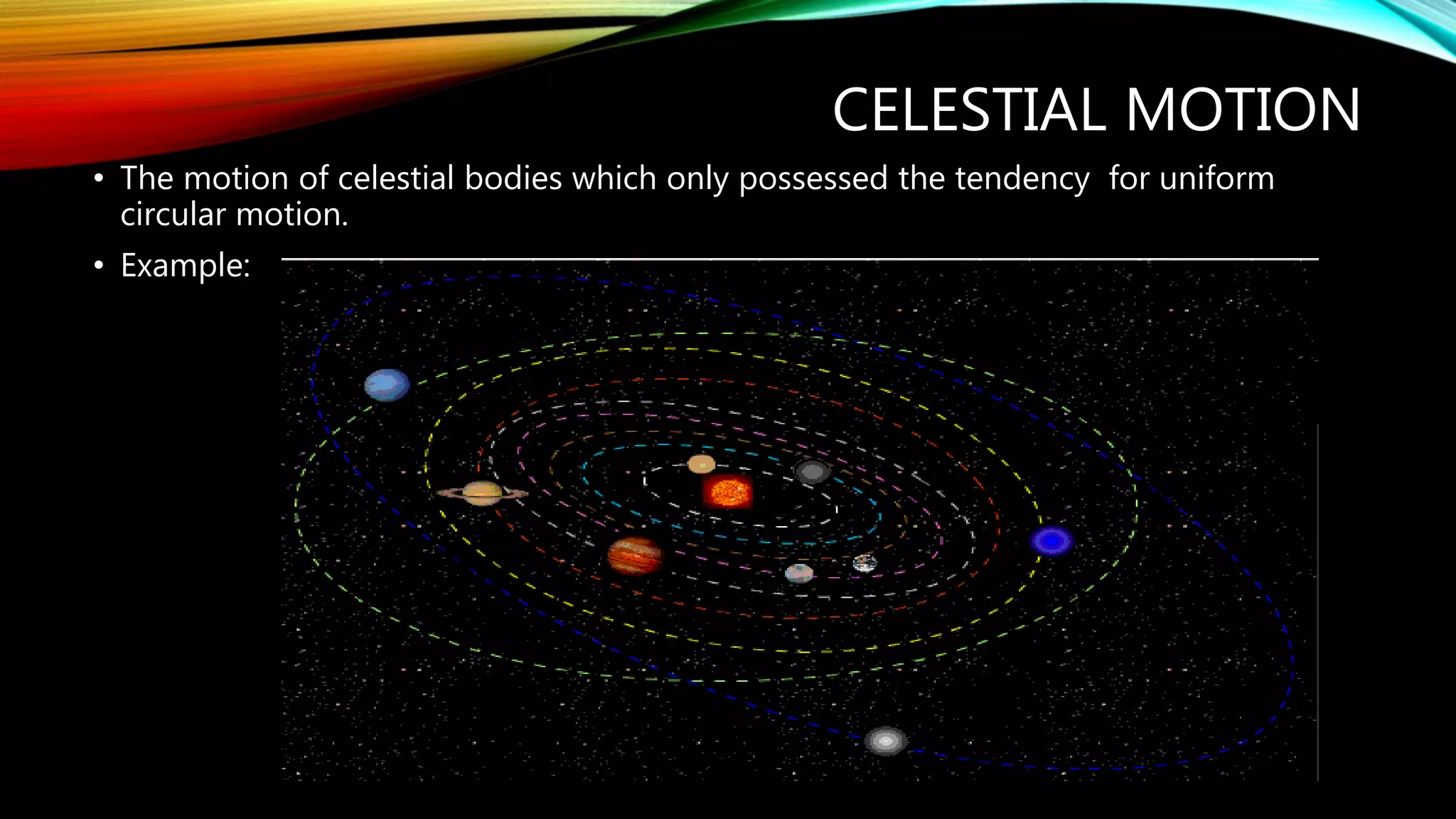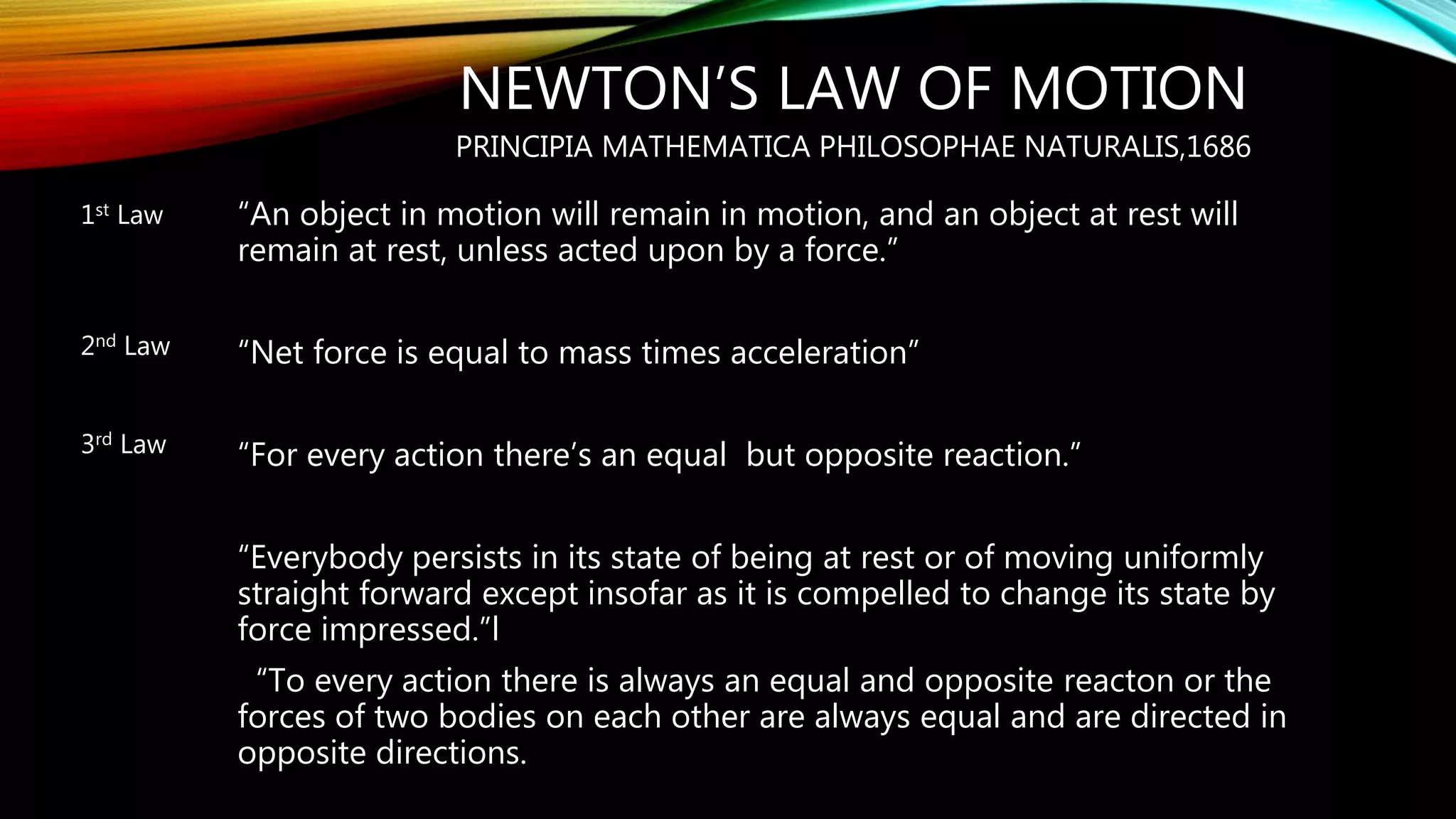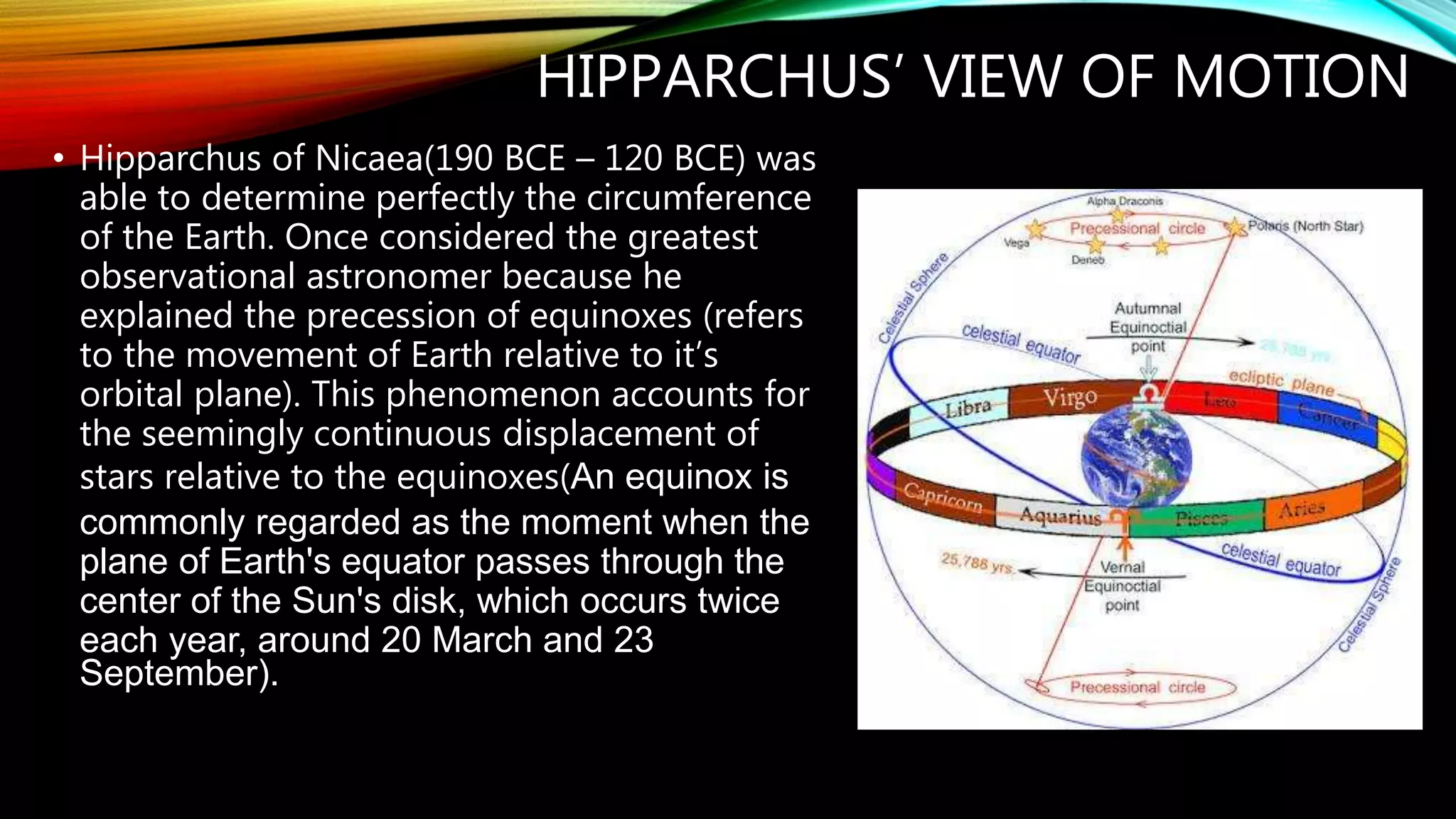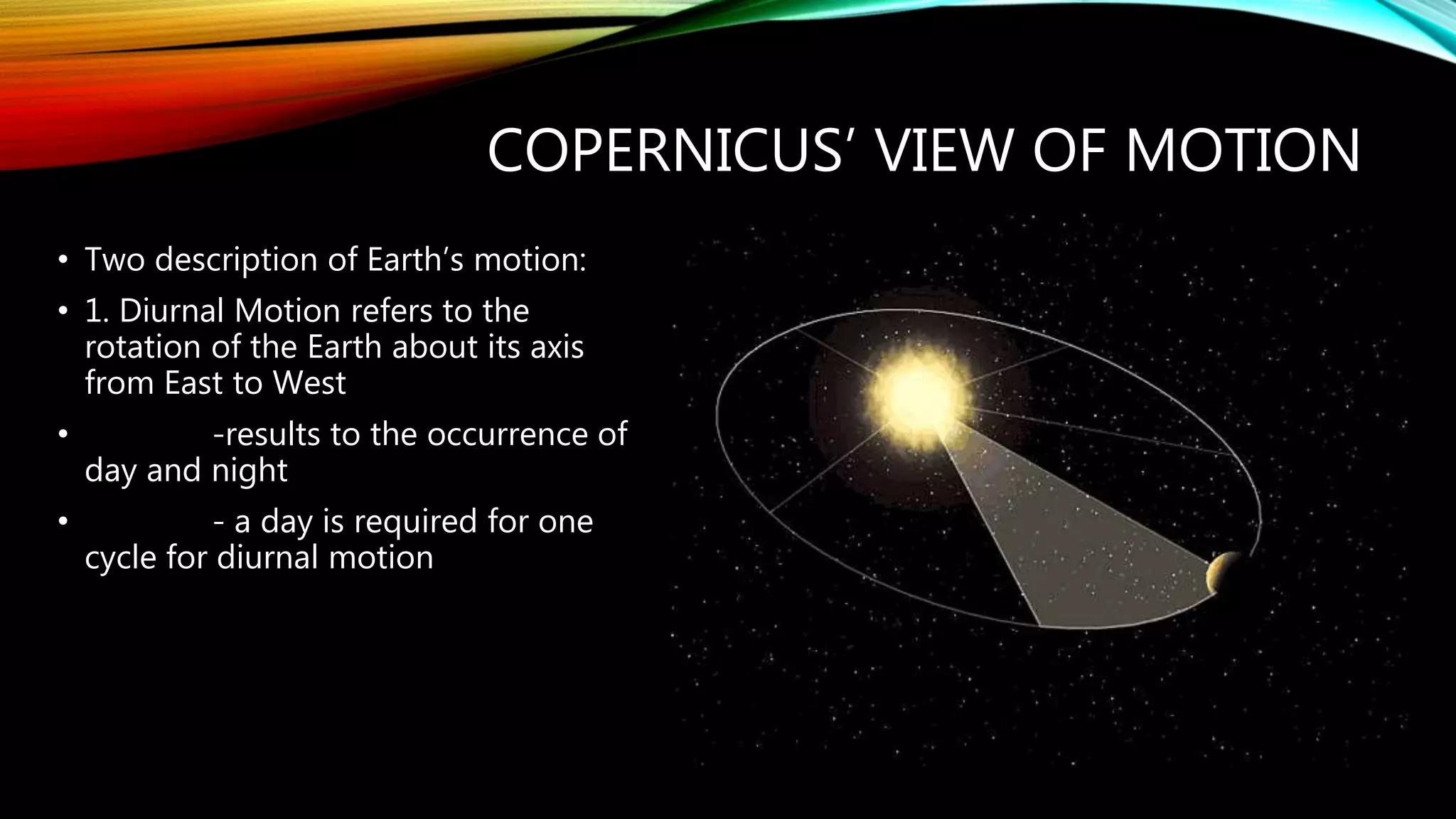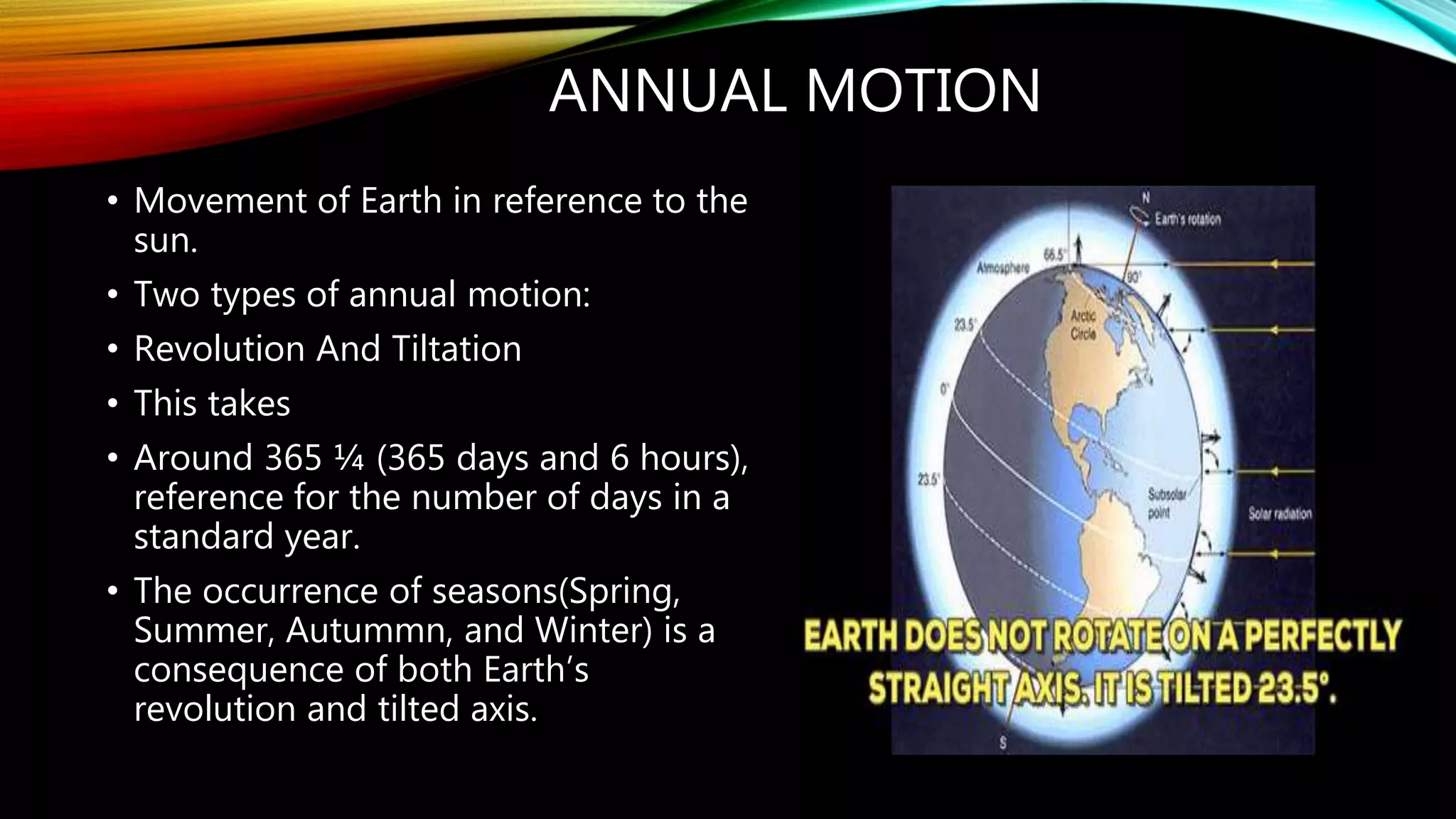The document discusses the history and key concepts of motion. It describes Aristotle's view that terrestrial motion involves objects returning to their natural place on Earth, while celestial motion involves uniform circular orbits. It also outlines Newton's laws of motion, Kepler's laws of planetary motion including elliptical orbits and equal areas over time, and how Tycho Brahe's observations enabled Kepler's laws. Hipparchus and Copernicus contributed by explaining the precession of equinoxes and describing Earth's diurnal and annual motion around the Sun.

